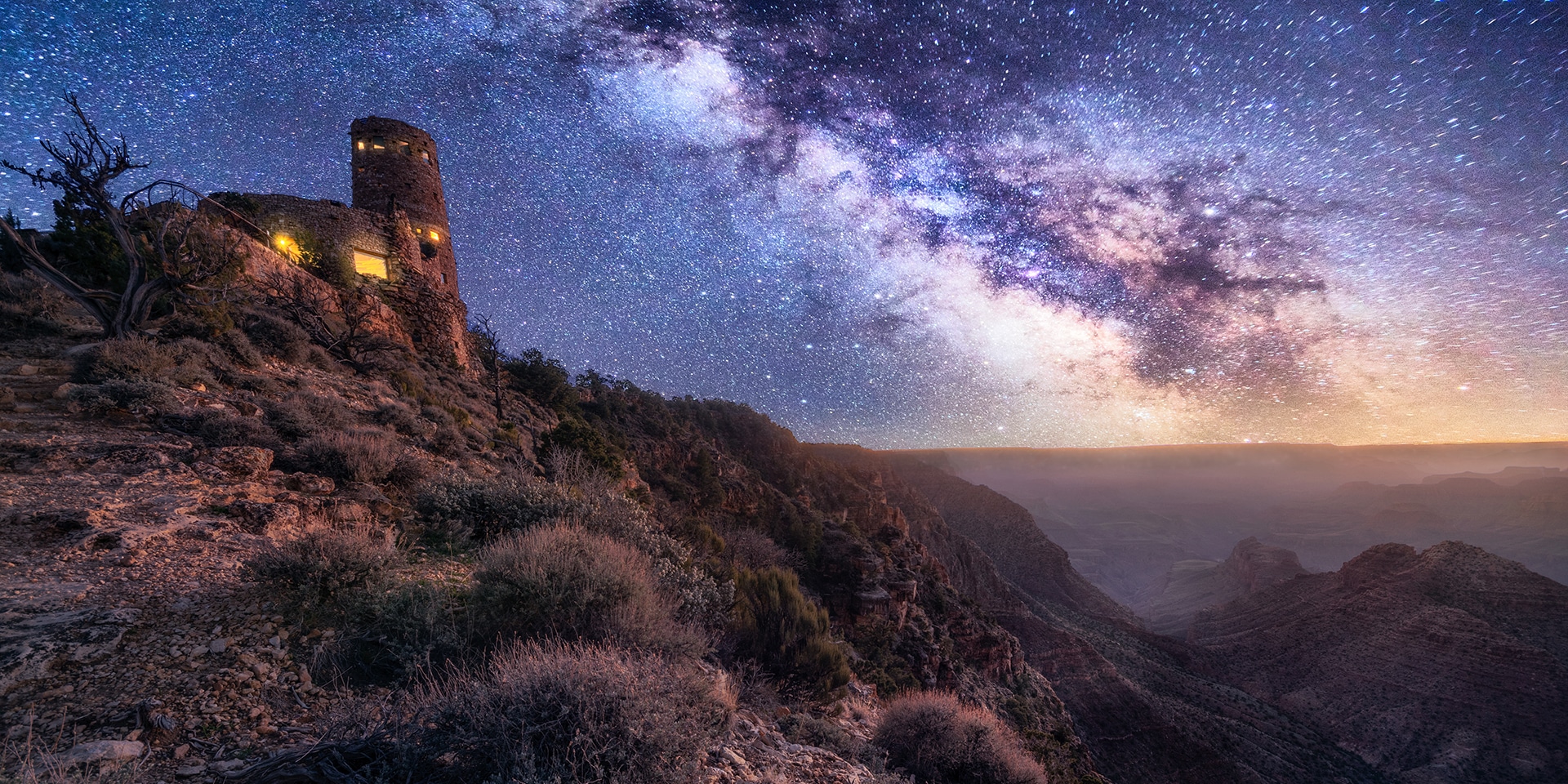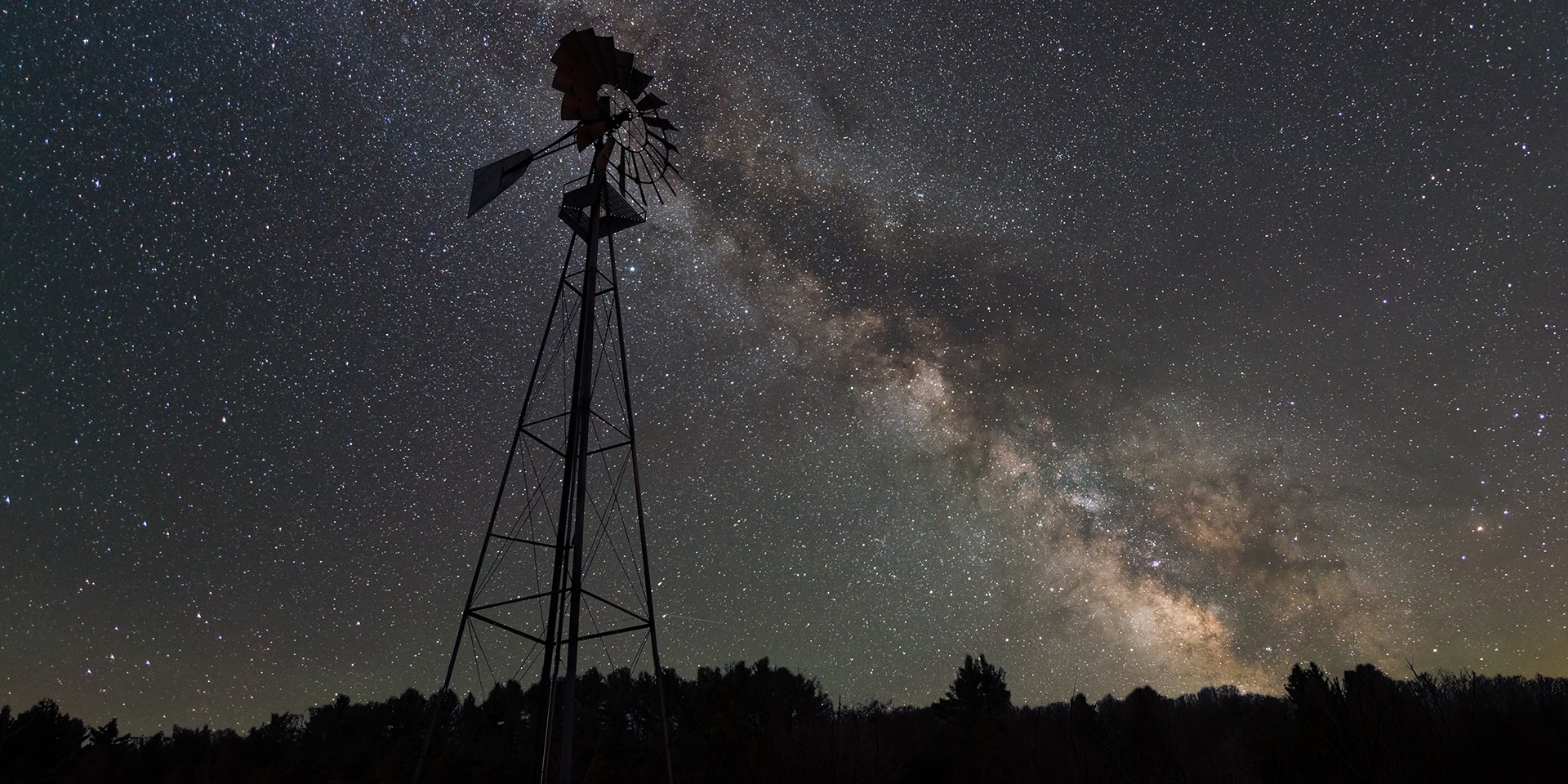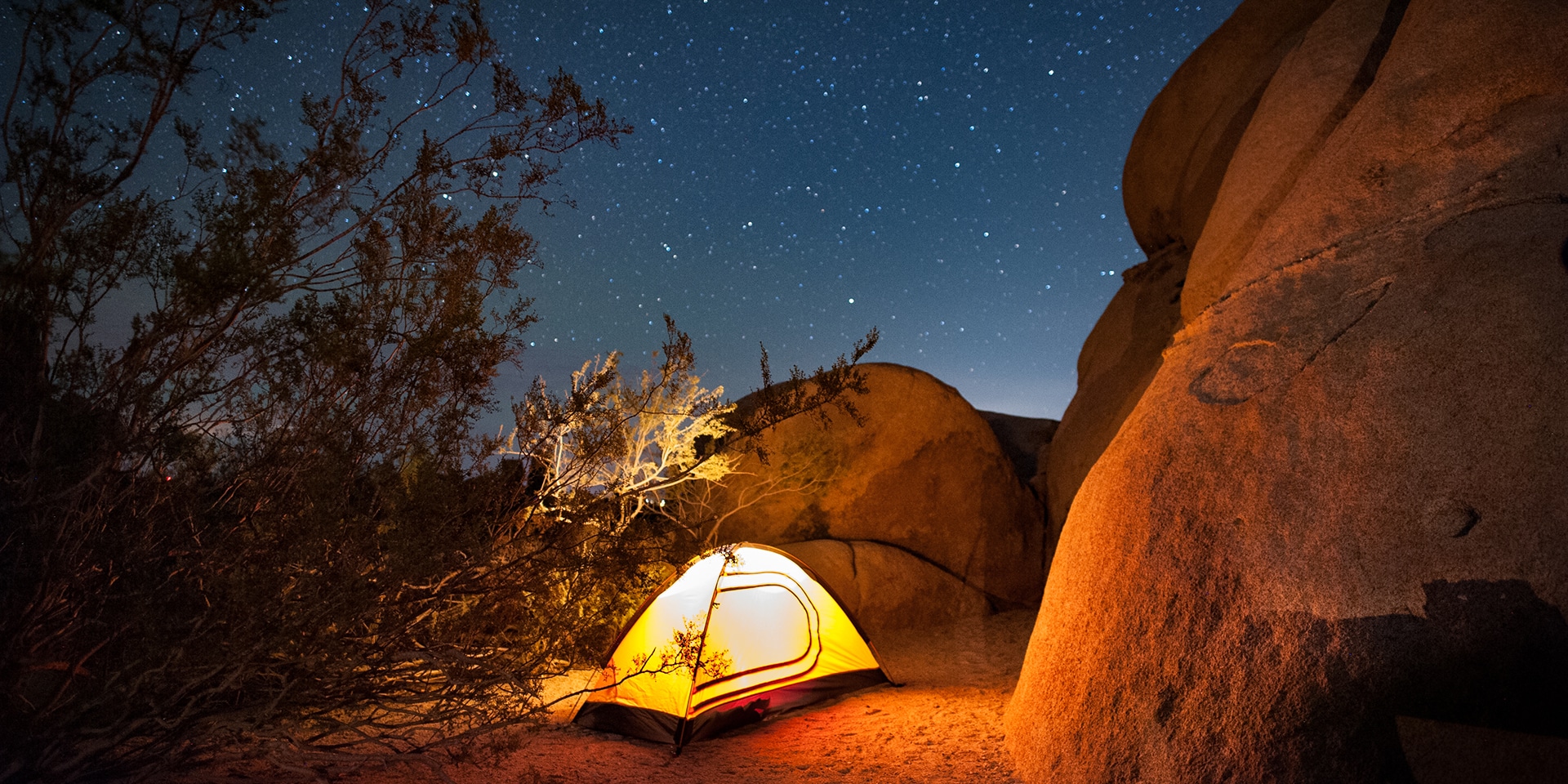
Head to parts of the Grand Canyon on a clear night. (Photo: Getty Images)
Road TripsGo Dark! Road Trip to the Best Dark Sky Destinations in the US
By Terry WardIf you’re seeking downtime connecting with the universe that goes well beyond just switching off your screen, there’s nothing quite like visiting one of the country’s best officially designated dark sky destinations.
Imagine a sky so inky black the Milky Way gets painted across its vast expanse like a silver slash of fairy dust. Believe it or not, only an estimated 10 percent of Americans have ever seen a truly dark night sky.
Hop in your car and set your sights on the country’s most incredible parks that have a true absence of artificial light (also known as light pollution) and have been designated so by the International Dark-Sky Association. Largely off the grid — though surprisingly accessible — these are spots that require some seeking out.
As always, check for travel restrictions and closures before planning your trip.
Grand Canyon National Park, Arizona
One of the most visited national parks in the country, and arguably the home of the most iconic of U.S. landscapes, Grand Canyon National Park did not earn its International Dark Sky certification (awarded in 2019) overnight.
The dimming and retrofitting of exterior lights throughout the park was just one of many steps that the park had to complete to enhance nighttime viewing of the skies for visitors.
Locations on both the South Rim and the North Rim of the park are among your options for scoring the best overhead views, with Bright Angel Point at the latter a favorite hangout for those with telescopes in tow to converge for the night.
Cherry Springs State Park, Pennsylvania

One of the East Coast’s best spots for stargazing is found about 2.5 hours by car south of Rochester, New York, in the hinterlands of north central Pennsylvania.
A designated Gold Level Dark Sky Park since 2008, Cherry Springs State Park sits within the mostly undeveloped Susquehannock State Forest. Lonely location that it is, don’t expect to have the place to yourself. With 360-degree views for positioning telescopes to maximize vistas, the flat park here often draws amateurs and more serious astronomers for stargazing parties.
It’s estimated that roughly 60 to 85 nights a year have ideal weather and sky conditions for admiring the heavens. Everything from the International Space Station and the cone-shaped phenomenon of zodiacal light to the marvel of the aurora borealis have been spotted here.
The park is open year-round, but the fall and winter months are considered prime time for stargazing thanks to lower humidity.
Dead Horse Point State Park , Utah
Landscapes carved with canyons and sheer cliffs are the daytime attraction at Dead Horse Point State Park, but come nightfall, all eyes turn to the skies. About 45 minutes from Moab in eastern Utah, this International Dark Sky Park earned its designation in 2016. Here you’ll see the night sky much as the Native Americans once did, long ago.
The park’s position high atop a plateau and shielded from any city lights make it feel like you’re inside a snow globe of constellations. Guided walks under the full moon and ranger-led telescope sessions are regularly held. Bring a chair and blanket to settle in and enjoy.
Kissimmee Prairie Preserve State Park, Florida
Just under two hours by car from the crowded Orlando theme parks, a dip into the real Florida awaits at the 54,000-acre Kissimmee Prairie Preserve State Park. Mostly dry Florida prairie land, the preserve is part of the headwaters to the Everglades and is home to endangered and threatened endemic species, including the burrowing owl and the grasshopper sparrow.
Urban and suburban light pollution don’t manage to infiltrate this isolated locale in the middle of the state, recognized in 2016 as Florida’s first Dark Sky Park. And while most Sunshine State parks close their gates to the public come sunset, this one stays open for people who’ve reserved one of the five astronomy pads that can be used for a few hours of night viewing.
They look a bit like regular drive-in campsites (complete with water and electricity hookups) and offer the perfect open terrain for viewing the sky.
Joshua Tree National Park, California

Its high-desert location, far from city crowds, makes Joshua Tree National Park worth a visit for far more than the iconic giant yucca palms that grow there. Telescope types come to the southernmost national park in California to train their gazes on a night sky delightfully devoid of light pollution and, more often than not, streaked through with the bright white slash of the Milky Way.
The park holds an annual Night Sky Festival each fall that mostly takes place at an observatory just outside the park entrance, complete with scores of telescopes for viewing, constellation tours and storytelling session about the night sky.
But any clear and preferably moonless night is a good time to bring a portable lawn chair to one of the roadside pullouts for some star spotting. For the darkest conditions and lightest park traffic, head to the Pinto Basin Road between Cholla Cactus Garden and Cottonwood to set up.
Enchanted Rock State Natural Area, Texas
Known for a towering pink dome of granite formed by a pool of magma that pushed above the Earth’s surface long ago, this Central Texas park less than two hours west of Austin is also squarely on the radar of star fiends.
Enchanted Rock State Natural Area’s rural setting provides ideal conditions free of artificial light for putting the spotlight on the Milky Way and other heavenly highlights.
Real-time measurements taken at night at the park constantly monitor the sky’s darkness, which can fluctuate due to the passing of the Milky Way overhead or the moon’s position and phase.
Full moon hikes and ranger-led stargazing events complete with tales of myths and legends are all part of the regularly scheduled fun.
Geauga Observatory Park, Ohio
Less than an hour’s drive east of bustling downtown Cleveland, in the seventh-most-populated state in the U.S., this Ohio park surprises visitors with the celestial experiences that await.
Geauga Observatory Park stays open year-round and well after darkness falls (until 1 a.m. during the summer period and until 11 p.m. the rest of the year), attracting people with telescopes when viewing conditions are ideal.
The park’s centerpiece sundial should be your first stop for a look at the lunar phases. Then take a stroll on the Planetary Trail, a mile-long loop with displays that put the scale of our solar system into fascinating perspective.
Gatherings to watch the full moon rise are a lot of fun. But the highlight for stargazers comes during regular events at the park’s Nassau Astronomical Station, during which you can climb a ladder to look through the station’s restored, research-grade telescope for a mind-blowing eye on the sky.







